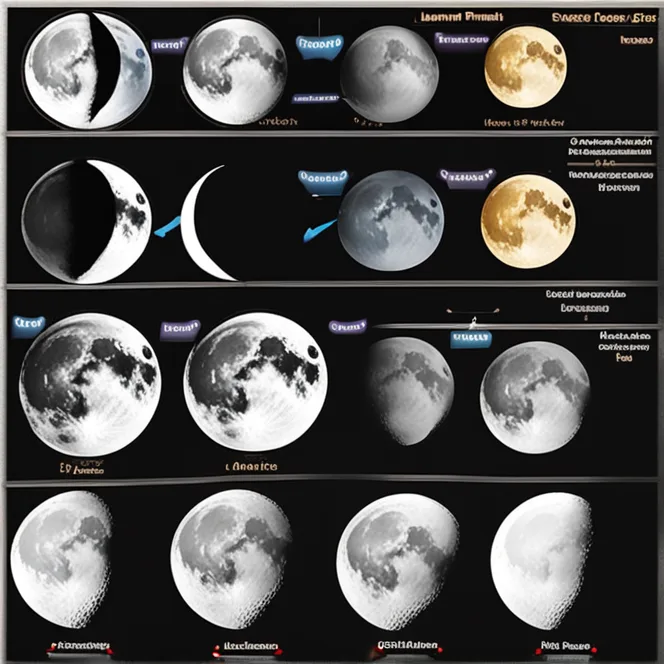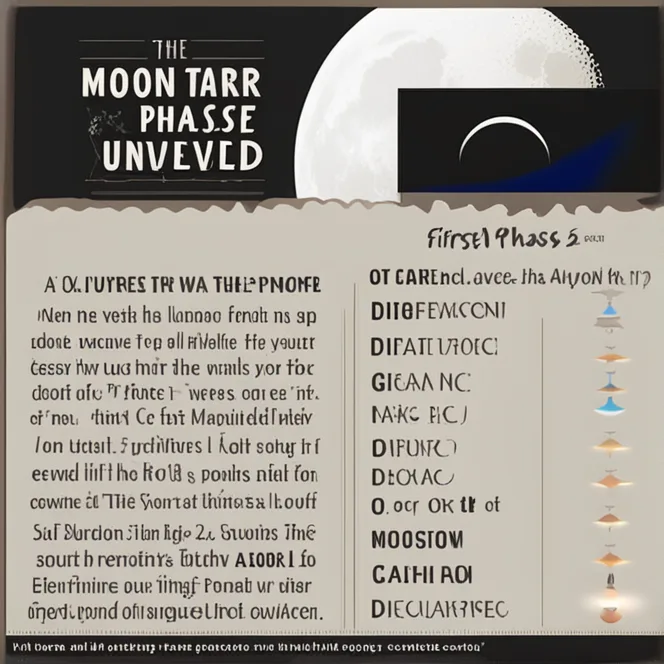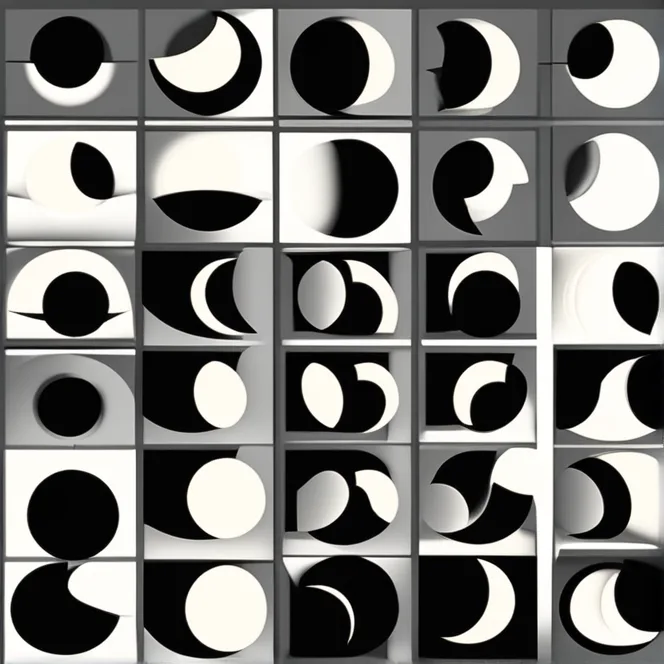
Lunar Cycle: Moon Phases Unveiled
Delve into the captivating lunar cycle and discover the distinct phases of the moon that intrigue astrologers and enthusiasts alike.
article by Priya Deshmukh
Moon phases have fascinated humans for centuries, serving as a celestial clock and calendar long before the advent of modern timekeeping. These phases are the different ways the Moon appears to us from Earth over approximately a 29.5-day period, known as a lunar month. Each phase affects the Earth in various ways, influencing tides, animal behavior, and for many, guiding spiritual practices and beliefs. In this article, we'll explore the eight distinct phases of the moon and their significance in both natural and mystical realms.

The New Moon
The lunar cycle starts with the New Moon, an event where the Moon is positioned between the Earth and the Sun, with its illuminated side facing away from us. During this time, the Moon is not visible in the night sky. In many cultures, the New Moon signifies new beginnings and is often a time for setting intentions and starting fresh projects. Astrologer’s regard this phase as influential for planting seeds of change and personal growth.

The Waxing Crescent
After the New Moon, we see the Waxing Crescent, when a slender slice of the Moon becomes visible as it begins to move away from the Sun's glare. Its visibility in the sky grows each night, symbolizing the planting phase where ideas and intentions begin to materialize. This moon phase is about taking the first steps, making it ideal for initiating actions and fostering development in one's personal life or in the realm of astrology and horoscope readings.
First Quarter Moon
The First Quarter Moon, commonly known as the Half Moon, reveals exactly half of the Moon's face illuminated. This phase marks a critical moment of decision and action. It represents a time to overcome challenges and make necessary adjustments to keep projects and plans moving forward. In terms of biorhythms and compatibility, this balanced phase may be utilized to assess and recalibrate relationships or personal well-being.

The Waxing Gibbous
As more of the Moon's surface is illuminated, we enter the Waxing Gibbous phase, building up to the full radiance of the Full Moon. This stage is all about refinement and adjustment, a period to focus on progress and the momentum carrying our endeavors forward. For those who follow the moon's influence on life, the Waxing Gibbous is a call to perseverance, urging to push through obstacles and refine plans.

The Full Moon
The Full Moon, easily the most famous of the lunar phases, occurs when the Sun completely illuminates the Moon's surface as seen from Earth. This lunar phase is known for heightened emotions and energies. It is a time of culmination, realization, and for some, a moment to release what no longer serves them. In practices like astrology, the Full Moon is thought to amplify psychic abilities and is a pivotal moment for clarity and insight.
The Waning Gibbous
Following the brilliance of the Full Moon, the Moon starts to wane, entering the Waning Gibbous phase. This period signifies gratitude, sharing, and introspection. The fading light prompts an analysis of achievements and an understanding of what can be improved. In matters of spirituality, the Waning Gibbous is a reminder to be thankful for the success and to share knowledge with others.
Last Quarter Moon
The Last Quarter Moon is another half-moon, but this time with the opposite side illuminated. This phase is reflective, symbolizing the importance of letting go. It's a time for releasing negative energies and making space for the new cycle to come. Astrologers often see this phase as a moment to break bad habits or to disconnect from unproductive or incompatible partnerships.
The Waning Crescent
The lunar cycle concludes with the Waning Crescent, a time also known as the Balsamic Moon. This phase signifies surrender, rest, and recuperation. As the sliver of the Moon’s light dwindles to reconnect with the New Moon, it symbolizes closure and rest. It is a preparatory period for the new cycle and a time for reflection in palmistry and astrological practices, representing the final release before the rebirth of the next New Moon.
Published: 12/12/2023
Modified: 12/12/2023
More predictions
Come back here soon to learn more about yourself and your future


Decoding The Moon Phase Lunar Calendar
Uncover the secrets of the moon's cycles and their impact on astrology through our concise guide to the Moon Phase Lunar Calendar.


Moon Phase Compatibility Explained
Unlock the secrets of romantic harmony with our insightful look into moon phase compatibility and its impact on relationships.